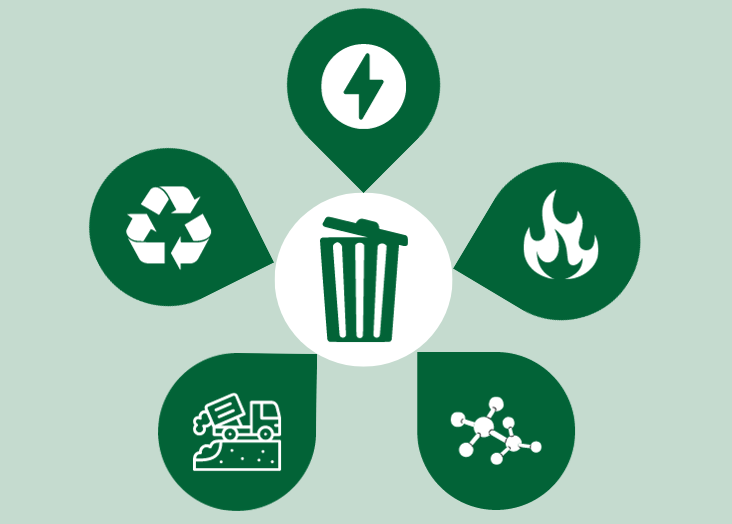The Influence of Recycling Lives Services on Communities and the Setting
The Influence of Recycling Lives Services on Communities and the Setting
Blog Article
Comprehending the Classification and Handling of Different Kinds Of Waste
Reliable waste management is critical for environmental sustainability, calling for a comprehensive understanding of the classification and handling of different waste kinds. Household waste, commercial byproducts, hazardous materials, electronic refuse, and natural remnants each demand unique procedures to ensure safety and decrease ecological damage.
Family Waste
Family waste, including a broad array of discarded products created from everyday living activities, stands for a significant part of the overall waste stream - recycling lives services. This classification consists of natural waste such as food scraps, yard cuttings, and paper items, along with inorganic products like plastics, metals, and glass. The varied nature of family waste demands effective classification and management to alleviate ecological impact and promote lasting living techniques
Reliable house waste monitoring starts with partition at the resource, helping with recycling, composting, and risk-free disposal. Organic waste, as an example, can be composted to create nutrient-rich soil changes, decreasing garbage dump concern and boosting soil health. Recyclable products, including paper, glass, and particular plastics, can be refined and repurposed, conserving sources and lowering power consumption associated with new product manufacturing.
Moreover, hazardous home waste such as batteries, electronic devices, and cleaning chemicals needs specialized dealing with to avoid dirt and water contamination. Public understanding campaigns and convenient disposal options play essential roles in guaranteeing correct disposal and recycling of these materials. By executing durable waste decrease approaches and fostering neighborhood participation, towns can significantly ease the ecological footprint of home waste.
Hazardous Waste
Hazardous waste, a major factor to global waste generation, includes a varied variety of products generated by production, building and construction, and various other commercial activities. This group includes spin-offs such as scrap metal, plastics, rubber, chemicals, and other residues. The composition and volume of hazardous waste can vary dramatically depending on the industry and production processes involved. Efficient administration of industrial waste is critical for decreasing environmental impact and advertising lasting practices.
The handling of commercial waste typically entails numerous processes: collection, disposal, therapy, and segregation. Collection systems are designed to effectively gather waste materials from various sources within a commercial operation.
Taking on techniques such as waste reduction, resource healing, and recycling can considerably lower the concern of hazardous waste on the atmosphere, adding to more lasting commercial methods.
Contaminated Materials

Harsh wastes can harm or destroy living cells and products. Flammable wastes can easily ignite, posing fire risks, while responsive wastes can trigger surges or release hazardous gases upon contact with various other materials.
Efficient contaminated materials monitoring involves numerous key techniques: identification and segregation of harmful products, safe transportation and storage space, and proper treatment and disposal. Therapy methods may consist of chemical stabilization, neutralization, and incineration. Regulatory conformity is vital, led by frameworks such as the Resource Preservation and Recovery Act (RCRA) in the USA, which makes certain risk-free and ecologically audio monitoring of contaminated materials.
Digital Waste
Digital waste, frequently abbreviated as e-waste, represents an expanding obstacle in waste management because of the quick obsolescence of technology. This group incorporates a wide array of disposed of digital gadgets, including smart devices, computer systems, tvs, and family home appliances. The intricacy of e-waste hinges on its structure; these things contain a combination of important products such as gold and copper, in addition to dangerous materials like mercury, cadmium, and lead.
.jpg)
Legislation and laws, such as the European Union's Waste Electronic and electric Equipment (WEEE) Instruction, objective to advertise accountable e-waste monitoring. These plans mandate manufacturers to promote the collection and recycling of digital products, therefore minimizing the problem on garbage dumps and minimizing ecological contamination.
Organic Waste
Organic waste, including eco-friendly products such as food scraps, yard trimmings, and farming deposits, makes up a substantial part of the community solid waste stream. This type of waste is remarkable not only for its volume but also for its possible environmental impact otherwise handled appropriately. Organic waste can decompose click here to find out more anaerobically in land fills, creating methane, a powerful greenhouse gas adding to climate adjustment.
Proper handling of organic waste includes a number of approaches. Additionally, diverting food waste from garbage dumps via contribution programs can reduce food instability while decreasing waste.
Municipalities and companies are progressively identifying the significance of organic waste monitoring. Applying extensive natural waste reusing programs not only reduces environmental effects however additionally aligns with wider sustainability objectives, advertising a circular economic situation where sources are constantly recycled and repurposed.
Final Thought
Efficient waste management and ecological security necessitate a thorough understanding of the classification and handling of numerous waste types. Applying proper methods for each waste kind makes sure liable and risk-free waste monitoring techniques, ultimately adding like this to the protection of ecological communities and public health and wellness.
Effective waste monitoring is critical for ecological sustainability, calling for a thorough understanding of the classification and handling of numerous waste kinds.Home waste, including a broad selection of disposed of materials created from daily living activities, represents a considerable part of the overall waste stream.Industrial waste, a major factor to worldwide waste generation, incorporates a varied range of products produced by production, building, and various other commercial tasks (recycling lives services).Harmful waste, a vital worry in waste administration, makes up products that present considerable dangers to human health and wellness and the atmosphere due to their hazardous, destructive, combustible, or reactive properties.Organic waste, encompassing biodegradable products such as food scraps, backyard trimmings, and farming residues, makes up a considerable part of the local strong waste stream
Report this page